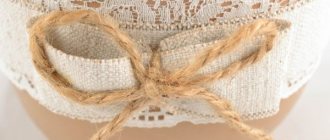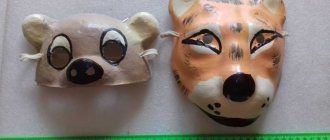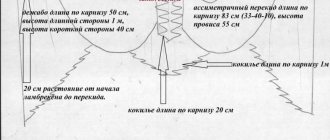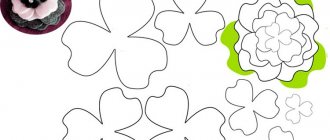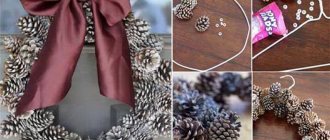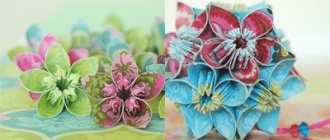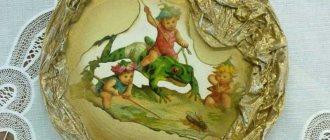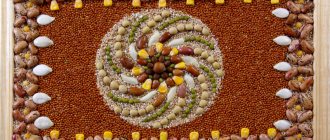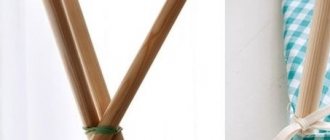Benefits of working independently
You can buy a finished beautiful product in any upholstered furniture store, but to make it from felt or silk - this will require time and effort. However, a hand-made ottoman will be an excellent reminder of the work done. In addition, the master can choose absolutely any color combination and decorate the product with any materials and texture.
Today, there are a huge number of models of homemade ottomans: soft in the shape of a bag or hard frame options, from a large plastic bottle or from an old stool. Let's consider the most current and original models.
What fabric to choose for frameless furniture
The bean bag chair consists of two covers. The inner one should be formed from breathable, durable materials. For the exterior, you need to choose an attractive, yet highly durable, easy to clean, abrasion-resistant fabric. The optimal choice is Oxford material, which is used to make tents. It has a special impregnation that makes it waterproof. Thanks to this, poufs made from this fabric can be used outdoors. The canvas is presented in a wide range of colors, so you can choose the appropriate option for any interior.
Another material option for the outer cover is eco-leather. It is also waterproof and equally easy to care for.
If the ottoman will be used only at home, you can use other dense fabrics - corduroy or tapestry. However, such a cover will need to be removed for washing, so you will need to install a zipper.
Making a homemade ottoman is not at all difficult. Choose the model you like and realize your idea.
Create a soft ottoman-bag
To work, you need to prepare the following materials:
- Fabric for outer cover.
- Fabric base for the inner bag.
- Filler.
- Decorative elements (ribbons, guipure).
- Pattern.
If the master has a sufficient level of cutting and sewing skills, you can make the template yourself. In another case, patterns of finished models are available on the Internet for studying and downloading.
Step-by-step instructions for the master:
- Using the prepared patterns, we cut out a fabric blank for the inner cover: the outer bag should be larger in volume than the inner cover.
- The inner cover is stuffed with soft filling.
- The outer bag is sewn according to a different principle. Eight parts are made using the templates: two rounded parts for the base and top, six wedge-shaped parts for the sides. This principle of creating elements will allow you to give the pouf a certain shape.
- The wedges are sewn together and with the lower part.
- An inner cover filled with filler is placed inside the formed frame-bag.
- Lastly, the upper rounded element of the pouf is sewn on.
- Be sure to sew in a zipper so that you can remove the outer cover for washing in the future.
The original ottoman is ready for practical use.
Hard frame pouf
For work you will need the following materials and a set of tools:
- Sheets of plywood or chipboard, several wooden blocks.
- Soft fabric for upholstery.
- Filler.
- Threads, needles, scissors.
- Screws.
To make a hard ottoman, you can use the following step-by-step instructions:
- First of all, prepare the frame. Two parts are cut out of chipboard for the base and top, as well as a long sheet to form the side.
- Wooden blocks are screwed onto the lower workpiece, and the frame cover is attached to the top.
- A flexible sheet of thinner chipboard is attached to the outer surface of the base, sequentially screwing the material to the bars with screws.
- Now you need to make soft upholstery.
- Blanks of the appropriate size are cut from the fabric base.
- A bag for the frame with a zipper running along the bottom of the pouf is sewn from some of the blanks.
- But the pouf cannot be left without a soft seat. Therefore, we separately prepare two fabric circles according to patterns: one should be larger in diameter.
- The circles are sewn together to form a kind of bag that needs to be filled with filler. To decorate, the circle is stitched with strong threads, making mesh-shaped seams.
- By slightly pulling the seam threads, we will give the pillow an interesting hilly look.
All that remains is to hem the pillow onto the top edge of the fabric cover.
Product with box
To make an ottoman with a drawer, you need to follow the following instructions:
- From chipboard we cut out 2 blanks measuring 37x37 cm and 37x40 cm, and one square - 40x40 cm;
- We cut out 4 pieces of 37 cm in length from the timber (4x4 cm in cross-section);
- From these elements we make a box with a height of 37 cm;
- Using wood glue, we fasten the timber in the inner corners;
- We fix the corners from the outside with metal corners or self-tapping screws;
- Apply glue to the bottom and timber. Glue the bottom and let it dry. After this we secure it with self-tapping screws;
- We attach 4 locking bars to the square sheet for making the lid. This will secure the lid in the box;
- We upholster it with soft material (batting, foam rubber, padding polyester).
This piece of furniture can be perfectly used as an ottoman for shoes, which can be put away in a storage box from season to season.
Ottoman from an old stool
If there is an old stool left somewhere in the closet, do not rashly throw it away: the stool will work perfectly as a frame for a pouf. The materials for the work will be approximately the same as in the previous method. To work, use the following instructions:
- Remove the seat from the stool.
- Fasten the grosgrain ribbon over the resulting opening, placing the stripes crosswise.
- Paint the legs of the stool in bright colors. You can additionally apply several layers of clear acrylic varnish to add a glossy shine.
- Wrap a layer of foam rubber around the legs and attach it with screws to a solid underlying base.
- The seat of such an original ottoman can be made from foam rubber, a fabric pillow, or a wicker cover with filling.
Choice of design and construction
This item is the easiest to produce, so even the most novice craftsman can handle its production. Before starting work, you first need to decide on the design of the future product. Studying photos of various ottomans will help with this.
The ottoman can have a rigid frame or do without one at all. Various materials can be used as a frame. The most commonly used classic carpentry materials are boards, plywood, and chipboard.
Ottomans with a frame can also be made from old plastic bottles, buckets or car tires. Poufs without a frame are a neatly sewn bag filled with polystyrene foam.
An interesting model for your home
Ottoman made from a plastic bottle
A similar model can be made from a durable 19-liter drinking water bottle. This pouf is perfect for a child's room. To work you will need to prepare:
- A 19 liter bottle and 4 1.5 liter bottles.
- Scissors.
- Glue.
- Fabric blanks.
Next, we will use the following instructions for creating a children's toilet seat:
- You need to cut off the neck of a large plastic bottle.
- Glue four plastic bottles to the inner surface of the workpiece (they act as support structures).
- All that remains is to wrap the frame with fabric using glue.
Use brightly colored fabric, as the pouf is intended for a child's room.
The most unusual ideas for ottomans
One has only to look at the various design ideas, and there is something to be surprised by. The variety of designs, styles and textures is amazing. Let's look at the most unusual models of handmade poufs.
Pouf from an old car inner tube
After washing and sealing holes (if any), the car inner tube is wrapped in a layer of padding polyester, gluing the material to the rubber. A fabric cover with a zipper is formed over the soft upholstery so that the fabric can be removed for washing. You can also place a filler wrapped in a small case in the inner space of the circle.
Poufs from old logs for the terrace
A great idea for a summer terrace or gazebo. You will first need to hygienically treat the deck: impregnate the wood with an antiseptic solution, antipyretic and antifungal agent. A fabric pillow is prepared according to the size of the upper platform of the old stump: you need to prepare two blanks, sew them and stuff them with synthetic padding. The pillow is secured with screws or strong glue.
There are a lot of ideas for creating interesting ottomans: from old boxes, cable reels, a bunch of durable bottles. If desired, you can make internal storage for magazines, old toys or other small items. Photos with step-by-step instructions, which can be easily found in any practical needlework magazine, will help you choose a pouf model and work technique.
Assembling parts of soft poufs
We wrap the base for the ottoman with linoleum and fasten it with self-tapping screws.
Next, the pairs begin to sew together. First, sew the side squares. The two pairs are stacked on top of each other in the following order: understudy - base (face up) - base (face down) - understudy. To the sewn 2nd pairs, the 3rd and 4th pairs are sewn in turn. The result is a rectangle, the long side of which is equal to the sum of all sides of the square. Pairs of top and bottom squares are attached to it. All seams are carefully smoothed with an iron.
Through the remaining side hole, filler is placed into the case - padding polyester, foam rubber, etc. Ottomans filled only with synthetic padding are very dented. Therefore, it is better to add any unnecessary fabric products to the padding polyester - dresses, T-shirts, towels, etc. The filler should be evenly distributed throughout the entire volume, especially in the corners. When the cover is sufficiently filled, the hole is sewn up by hand. For the side surface of the cube, you could take one rectangle instead of 4 squares. But in this case, it would not be possible to make an ottoman with your own hands in the form of a cube with clear outlines of the edges.
We wrap it in foam rubber and attach wheels to make the ottoman mobile.
For a round soft chair, a different pattern will be required. A circle is drawn on a piece of paper, the diameter of which corresponds to the size of the future pouf. The circle is divided into 8 (or more) segments. In each segment, the arc is replaced by a straight line. This makes 8 triangles. You need to draw rectangles to the base of the triangles. One side of the rectangle is the base of the triangle. The height of the ball depends on the size of the other side - the larger it is, the higher the pouf will be.
Next, proceed according to the above scheme: cut out the parts on the fabrics, put all the parts in pairs, sew the pairs along the side seams, which are steamed with an iron. The result is two hemispheres that need to be sewn together. Do not sew along the entire circumference, leaving a small hole for stuffing.
The hole for stuffing can be left in the center of one of the hemispheres. To do this, when sewing, the stitching should not reach the top of the triangles by 3 cm. You will also have to cut out an octagonal part - a lid, which, after stuffing, is sewn on by hand. On a plain fabric, a zigzag hand stitch looks good, which can be used to cover the ottoman along all the seams. You can decorate such a chair with decorative ribbon, fringe, etc. The needlewoman herself will figure out how to cover the ottoman.

